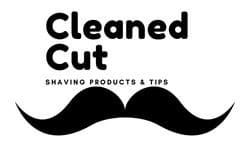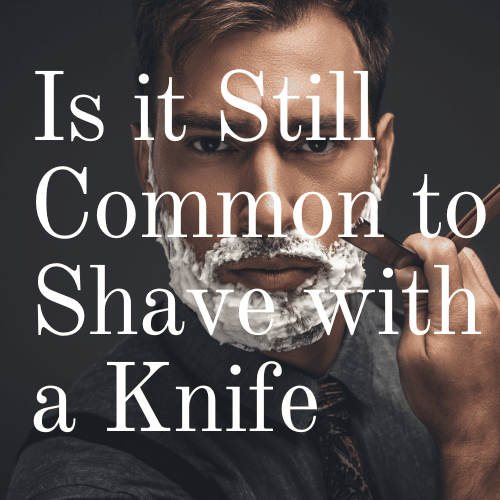When it comes to having a smooth shave, men and women primarily rely on using razors due to the convenience they offer. In the past, knives were commonly used to remove stubble and remove hair. If you’re looking for a new way to shave and are ready to toss out your razor, shaving with a knife is a lost art that many people are adopting again due to the advantages that it offers.
The Benefits of Shaving with a Knife
Many people are curious about if it’s worth shaving with a knife while staying groomed and creating a polished appearance. One of the main reasons many people still shave with knives is because of the lack of razor burn. This makes it a great option for those who have sensitive skin and are prone to developing rashes each time they shave. You don’t have to worry about any discomfort or irritation, which can improve the quality of your skin.
Shaving with a knife also delivers better results, allowing you to shave less frequently throughout the week and save additional time when getting ready and grooming. Knives shave closer to the skin, which can prevent you from having a five o’clock shadow if you have darker, coarser hair. A close shave is hard to achieve with a disposable razor that isn’t made with quality materials.
Knives also remain a lot sharper than razors and have a longer lifespan. You can spend less money replacing the knife over time compared to a razor, which becomes dull and needs to be replaced often. You’ll save more money using a knife and can avoid using a dull blade on your skin. Some high-quality knives can even last a lifetime, which offers a higher level of convenience instead of using disposable razors.
Using a knife is also a more eco-friendly way of shaving because there’s less waste involved. You can reduce your impact on the environment by using a durable knife that doesn’t need to be replaced shave after shave. This means you don’t have to buy packaged products that only last temporarily.
Safety Precautions When Shaving with a Knife
There are a few safety and sanitation precautions to take while using a knife on your skin to avoid nicks and deep cuts. Always wash your hands and sanitize the blade before each use. Avoid proceeding with the shave if you currently have a rash or skin irritation, which can lead to bleeding and infections.
It’s also necessary to inspect the knife before getting started to ensure the blade is firmly attached to the base of the knife and isn’t loose or at risk of slipping out. Avoid using a dull blade, which will require applying more force on the skin and can result in minor injuries. Keep your hands, fingers, and other body parts away from the face while shaving. You can also consider wearing a protective glove on your free hand, especially when you’re new to the process of shaving with a knife.
If you develop a minor cut, immediately pat the area dry with a clean cloth and apply a cotton swab or styptic powder to the affected area.
Preparing the facial hair in advance can also make it easier to trim, making it necessary to apply warm towels to the skin. Pre-shave oil can also be applied to the skin to prep it for having contact with the blade. Avoid applying warm or hot towels on skin that has blisters or is chapped. Gently drag the knife’s blade across the skin in a forward motion that is led by the point of the knife to reduce skin irritation. Shaving with the grown pattern of your hair will create the smoothest and cleanest shave and will also prevent ingrown hairs from developing.
Keeping the knife sharp at all times is the most effective way of avoiding nicks or cuts on the skin. The knife should be sharpened every 60 to 70 shaves. Some knives or straight razors are sharp enough to only sharpen once or twice each year, depending on how often you shave. Avoid rolling the blade as you strop, which can cause it to become dull. Those with sensitive skin may prefer a duller blade to avoid excess irritation that can come with a sharper knife.
How to Shave with a Knife
When you’re ready to shave with a knife, it’s important to start by hydrating your skin with warm water, whether you take a hot shower or wash your face before you start shaving. This immediately softens the stubble and opens the pores to have a more comfortable, closer shave. Wrapping a warm towel around your head and face will deliver similar results.
Begin by applying pre-shave oil on the skin to enjoy an easier shaving process that doesn’t irritate. The best pre-shave oil products have natural ingredients that soften the skin and won’t affect how easily the knife glides against your skin.
Select a quality shaving brush that has badger bristles or boar hair and soak the brush in hot water for one minute. You can then apply shaving cream or soak it onto the bristles and start working it into the whiskers on your face. High-quality creams and soaps deliver better results compared to cheap shaving creams.
Create a lather and grip the knife between your thumb and fingers to have more control of the blade and the strokes you create. The thumb should be placed on one side of the base of the knife, whereas the other fingers should lay on the other side of the base. The knife should be held at a 30-degree angle to create the closest shave instead of having it lay flat on the skin. The base of the knife should be close to your nose as you start shaving.
Stretch your skin to make it smooth and flat to avoid injuries and to cut as close to the skin as possible. Gently shave from the top of the cheek to the bottom of your face near your chin and jaw. Create a long, smooth stroke and periodically rinse off the blade to remove excess hair that starts to accumulate.
As you move on to shaving your chin, start from your mouth and move downward with each stroke. Gentle and short strokes are ideal since you’re working with a smaller surface area. Make your lips tight to make it easier to shave around the edges.
While shaving the neck and jaw, look upward and make the skin taut and tight by pulling it with your other hand. Create long strokes downward without applying too much pressure.
Shave over any areas where you’ve missed to create a cleaner shave. Rinse off the shaving cream and loose hair with cold water, which will make your pores close up and will reduce any irritation that is present. Bay rum and aftershave are also effective to use if you’re prone to inflammation where you’ve shaved. Avoid rubbing the skin, and always pat it dry with a clean towel as you finish the process.
The Best Knives to Use When Shaving
Not all knives are created equal when shaving the face, making it necessary to do your research to avoid cutting your skin. The Utopia Care Professional Barber Straight Edge Razor is a top pick because it’s packaged with wax paper and offers a smooth grip, making it comfortable to use. It comes with a black matte finish and a blade cover that is easy to flip on or off for added protection when it’s not in use. It delivers a silken shave with consistent results with frequent use.
The Facon Professional Classic Straight Edge Barber Razor is constructed with stainless steel and a black powder coating, making it look modern and sleek. The knife has a medium weight, making it comfortable to use without straining the hand muscles. The ergonomic design also makes it easier to control while creating a close shave. The sturdy materials used allow the product to have a lifetime guarantee to ensure you never have to replace it.
The Handmade Damascus Straight Folding Classic Barber Blade has a classic design that features a unique wood grain design on the blade. It delivers smooth shaves with its sharp edge, which makes it easy to get a clean shave with a single stroke. The knife even comes with a leather case that protects the parts and makes it easy to transport.
The Cambridge Cutthroat Straight Edge Razor Kit has quality craftsmanship and is made with stainless steel. The knife is designed to last for several years with frequent use and features a classic wood handle that has an ergonomic shape. The sharp blade glides smoothly over the skin without any resistance and makes it easy to shave at a faster pace. It’s useful in trimming the beard or shaping it due to the high level of precision it delivers. The product also comes with ten additional blades, ensuring that it can be used long-term with daily or frequent use.
Tips for Sharpening a Knife
Sharpening your knife is one of the most important parts of maintaining a clean shave to ensure you can cut closer to the skin without nicks or irritation. Dull blades tend to drag with more resistance and can lead to razor burn.
Sharpening a knife will increase its lifespan and will allow you to get more use out of it, making it necessary to use honing steel. Run the blade over the honing steel and downward, starting near the bolster of the knife. Avoid cutting towards yourself to reduce the risk of getting injured. You can also place the knife directly on the table for added safety. Get in-between the different serrations and run the knife down while running the flat side over it.
A manual sharpener is also useful by slowly dragging the knife across it. This type of product shaves the metal down to get it sharper and will leave shaving behind with each swipe that is made. This is ideal if you have a cheaper knife. An electric sharpener is also useful, which has two sides and is easy to use with its automatic operation. Place the blade into the slit and pull it through before running it through the honer.
You can also use a water stone for sharpening the knife, which is easier to maintain than an oil stone. Soak the water stone in water for 30 minutes to ensure its lubricated and cool as it sharpens the blade. The rougher grit on the stone will give the knife more shape and will help the blade to become more defined. Keep the stone facing away from you as you start to use it. Place the blade of the knife directly onto the stone at a 90-degree angle for the best results. Use your right hand and apply pressure with your fingers, adding three to four pounds of pressure. Begin at the tip while pushing the blade away from your body before turning the blade over and pulling it towards you.
If you start to see any metal particles or shavings left behind on the stone, add more water as you continue sharpening the knife. You can turn the blade over after you notice the blade starts to become sharper after a few swipes. Repeat the process on the fine side of the stone to create a sharp edge.
Once you discover how to shave with a knife, it can be less intimidating to toss out your disposable razors and switch to a tool that has been used for thousands of years. The process of shaving can gradually become quicker as you learn how to use the knife and can yield better results than using cheap razors that have a short lifespan.



